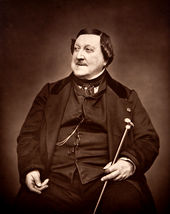 On this day in 1868, composer, The Italian Mozart, Gioachino Rossini, died at his country house at Passy, France at the age of 76. Born Gioachino Antonio Rossini on 29 February 1792 in Pesaro, Italy. Best known for his 39 operas which inlcude Il barbiere di Siviglia (The Barber of Seville), Guillaume Tell (William Tell) and La cenerentola (Cinderella). A 30-year-old Rossini met Ludwig van Beethoven, then aged 51, in 1822. Communicating in writing, Beethoven noted: “Ah, Rossini. So you’re the composer of The Barber of Seville. I congratulate you. It will be played as long as Italian opera exists. Never try to write anything else but opera buffa; any other style would do violence to your nature.” That same year Rossini married the renowned opera singer Isabella Colbran. She died in 1845 and on 16 August 1846, he married Olympe Pélissier. During his life Rossini was photographed by Félix Nadar and Etienne Carjat and had his portrait painted by Giorces, Vincenzo Camuccini and Francesco Hayez. I saw Houston Grand Opera’s production of La cenerentola in October of 1995 with Cecilia Bartoli in the role of Angelina (Cinderella). I fell in love with opera, and Miss Bartoli, that night.
On this day in 1868, composer, The Italian Mozart, Gioachino Rossini, died at his country house at Passy, France at the age of 76. Born Gioachino Antonio Rossini on 29 February 1792 in Pesaro, Italy. Best known for his 39 operas which inlcude Il barbiere di Siviglia (The Barber of Seville), Guillaume Tell (William Tell) and La cenerentola (Cinderella). A 30-year-old Rossini met Ludwig van Beethoven, then aged 51, in 1822. Communicating in writing, Beethoven noted: “Ah, Rossini. So you’re the composer of The Barber of Seville. I congratulate you. It will be played as long as Italian opera exists. Never try to write anything else but opera buffa; any other style would do violence to your nature.” That same year Rossini married the renowned opera singer Isabella Colbran. She died in 1845 and on 16 August 1846, he married Olympe Pélissier. During his life Rossini was photographed by Félix Nadar and Etienne Carjat and had his portrait painted by Giorces, Vincenzo Camuccini and Francesco Hayez. I saw Houston Grand Opera’s production of La cenerentola in October of 1995 with Cecilia Bartoli in the role of Angelina (Cinderella). I fell in love with opera, and Miss Bartoli, that night.
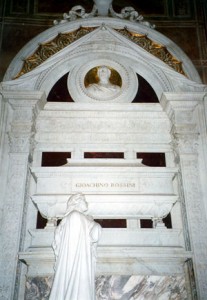 The Final Footprint – Rossini was entombed in the Rossini Private Mausoleum in Cimetière du Père Lachaise, Paris, Ile-de-France Region, France. In 1887, his remains were moved and entombed in the Basilica di Santa Croce, in Florence, at the request of the Italian government. The Basilica di Santa Croce (Basilica of the Holy Cross) is the principal Franciscan church in Florence, and a minor basilica of the Roman Catholic Church. It is situated on the Piazza di Santa Croce. It is the burial place of some of the most famous Italians; Michelangelo, Galileo, Machiavelli, and is known also as the Temple of the Italian Glories (Tempio dell’Itale Glorie). His private mausoleum remains unoccupied at Père Lachaise. Père Lachaise is the largest cemetery in Paris and one of the most visited cemeteries in the world. Bravo Rossini!
The Final Footprint – Rossini was entombed in the Rossini Private Mausoleum in Cimetière du Père Lachaise, Paris, Ile-de-France Region, France. In 1887, his remains were moved and entombed in the Basilica di Santa Croce, in Florence, at the request of the Italian government. The Basilica di Santa Croce (Basilica of the Holy Cross) is the principal Franciscan church in Florence, and a minor basilica of the Roman Catholic Church. It is situated on the Piazza di Santa Croce. It is the burial place of some of the most famous Italians; Michelangelo, Galileo, Machiavelli, and is known also as the Temple of the Italian Glories (Tempio dell’Itale Glorie). His private mausoleum remains unoccupied at Père Lachaise. Père Lachaise is the largest cemetery in Paris and one of the most visited cemeteries in the world. Bravo Rossini!
 On this day in 1903, Danish-French Impressionist and Neo-Impressionist painter Camille Pissarro died in Paris at the age of 73. Born Jacob Abraham Camille Pissarro on 10 July 1830 in Charlotte Amalie, Saint Thomas, Danish West Indies (now US Virgin Islands). Pissarro’s importance resides in his contributions to both Impressionism and Post-Impressionism. He studied with Gustave Courbet and Jean-Baptiste-Camille Corot, and later studied and worked alongside Georges Seurat and Paul Signac when he took on the Neo-Impressionist style at the age of 54. In 1873 he helped establish a collective society of fifteen aspiring artists, perhaps becoming the leading figure in holding the group together and encouraging the other members. Art historian John Rewald called Pissarro the “dean of the Impressionist painters”, not only because he was the oldest of the group, but also “by virtue of his wisdom and his balanced, kind, and warmhearted personality”. Cézanne said “he was a father for me. A man to consult and a little like the good Lord,”. Pissarro apparently was one of Gauguin’s masters. Renoir referred to his work as “revolutionary”, through his artistic portrayals of the “common man”, as Pissarro insisted on painting individuals in natural settings without “artifice or grandeur”. Pissarro is the only artist to have shown his work at all eight Paris Impressionist exhibitions, from 1874 to 1886. In 1871 he married his mother’s maid, Julie Vellay, a vineyard grower’s daughter, with whom he would later have seven children. They lived outside of Paris in Pontoise and later in Louveciennes, both of which places inspired many of his paintings including scenes of village life, along with rivers, woods, and people at work.
On this day in 1903, Danish-French Impressionist and Neo-Impressionist painter Camille Pissarro died in Paris at the age of 73. Born Jacob Abraham Camille Pissarro on 10 July 1830 in Charlotte Amalie, Saint Thomas, Danish West Indies (now US Virgin Islands). Pissarro’s importance resides in his contributions to both Impressionism and Post-Impressionism. He studied with Gustave Courbet and Jean-Baptiste-Camille Corot, and later studied and worked alongside Georges Seurat and Paul Signac when he took on the Neo-Impressionist style at the age of 54. In 1873 he helped establish a collective society of fifteen aspiring artists, perhaps becoming the leading figure in holding the group together and encouraging the other members. Art historian John Rewald called Pissarro the “dean of the Impressionist painters”, not only because he was the oldest of the group, but also “by virtue of his wisdom and his balanced, kind, and warmhearted personality”. Cézanne said “he was a father for me. A man to consult and a little like the good Lord,”. Pissarro apparently was one of Gauguin’s masters. Renoir referred to his work as “revolutionary”, through his artistic portrayals of the “common man”, as Pissarro insisted on painting individuals in natural settings without “artifice or grandeur”. Pissarro is the only artist to have shown his work at all eight Paris Impressionist exhibitions, from 1874 to 1886. In 1871 he married his mother’s maid, Julie Vellay, a vineyard grower’s daughter, with whom he would later have seven children. They lived outside of Paris in Pontoise and later in Louveciennes, both of which places inspired many of his paintings including scenes of village life, along with rivers, woods, and people at work.
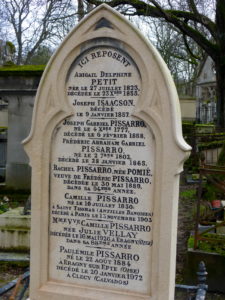 The Final Footprint – Pissarro was entombed in the Cimetière du Père Lachaise, Paris, Ile-de-France Region, France, the largest cemetery in the city of Paris (44 hectares or 110 acres). Père Lachaise is in the 20th arrondissement and is notable for being the first garden cemetery, as well as the first municipal cemetery. It is the site of three World War I memorials. The cemetery is on Boulevard de Ménilmontant. The Paris Métro station Philippe Auguste on line 2 is next to the main entrance, while the station called Père Lachaise, on both lines 2 and 3, is 500 metres away near a side entrance. Many tourists prefer the Gambetta station on line 3, as it allows them to enter near the tomb of Oscar Wilde and then walk downhill to visit the rest of the cemetery. Other notable Final Footprints at Père Lachaise include; Guillaume Apollinaire, Honoré de Balzac, Georges Bizet, Jean-Dominique Bauby, Maria Callas, Chopin, Colette, Auguste Comte, Jean-Baptiste-Camille Corot, Max Ernst, Molière, Jim Morrison, Édith Piaf, Marcel Proust, Sully Prudhomme, Gioachino Rossini (see above), Georges-Pierre Seurat, Simone Signoret, Gertrude Stein, Dorothea Tanning, Alice B. Toklas, Oscar Wilde, and Richard Wright.
The Final Footprint – Pissarro was entombed in the Cimetière du Père Lachaise, Paris, Ile-de-France Region, France, the largest cemetery in the city of Paris (44 hectares or 110 acres). Père Lachaise is in the 20th arrondissement and is notable for being the first garden cemetery, as well as the first municipal cemetery. It is the site of three World War I memorials. The cemetery is on Boulevard de Ménilmontant. The Paris Métro station Philippe Auguste on line 2 is next to the main entrance, while the station called Père Lachaise, on both lines 2 and 3, is 500 metres away near a side entrance. Many tourists prefer the Gambetta station on line 3, as it allows them to enter near the tomb of Oscar Wilde and then walk downhill to visit the rest of the cemetery. Other notable Final Footprints at Père Lachaise include; Guillaume Apollinaire, Honoré de Balzac, Georges Bizet, Jean-Dominique Bauby, Maria Callas, Chopin, Colette, Auguste Comte, Jean-Baptiste-Camille Corot, Max Ernst, Molière, Jim Morrison, Édith Piaf, Marcel Proust, Sully Prudhomme, Gioachino Rossini (see above), Georges-Pierre Seurat, Simone Signoret, Gertrude Stein, Dorothea Tanning, Alice B. Toklas, Oscar Wilde, and Richard Wright.
Gallery
-
-
Châtaignier à Louveciennes, 1870, Musée d’Orsay, Paris
-
-
Old Chelsea Bridge, London 1871, Smith College Museum of Arts
-
-
Camille Pissarro, portrait of Paul Cézanne, National Gallery
-
-
Un Carrefour à l’Hermitage, Pontoise, 1876, Musée Malraux
-
-
Toits rouges, coin d’un village, hiver, Côte de Saint-Denis, Pontoise, 1877, Musée d’Orsay, Paris
-
-
The Artist’s Palette with a Landscape, c.1878, Clark Art Institute
-
-
Washerwoman, Study, 1880, The Metropolitan Museum of Art
-
-
Conversation, c. 1881, National Museum of Western Art
-
-
The Harvest, 1882, Bridgestone Museum of Art, Tokyo
-
-
The Church at Eragny, 1884, Walters Art Museum
-
-
Bergère rentrant des moutons (Shepherdess Bringing in Sheep) 1886, University of Oklahoma
-
-
Rouen, Rue de l’Épicerie, 1898, private collection
-
-
La Place due Théâtre Français, 1898, Los Angeles County Museum of Art
-
-
View of Rouen, 1898, Honolulu Museum of Art
-
-
Morning, Winter Sunshine, Frost, the Pont-Neuf, the Seine, the Louvre, Soleil D’hiver Gella Blanc, c. 1901, Honolulu Museum of Art
-
-
Hay Harvest at Éragny, 1901, National Gallery of Canada, Ottawa
-
-
Le Jardin de Mirbeau aux Damps, Octave Mirbeau’s garden in Damps, 1891
-
Place du Havre, Paris, 1893, Art Institute of Chicago
-
- ”Boulevard Montmartre” cityscape series
-
-
Boulevard Montmartre à Paris, 1897
-
-
Boulevard Montmartre, morning, cloudy weather, National Gallery of Victoria, 1897
-
-
-
The Boulevard Montmartre on a Winter Morning, 1897, Metropolitan Museum of Art
-
-
-
Le Boulevard de Montmartre, Matinée de Printemps, street view from hotel window, 1897
-
Boulevard Montmartre la nuit, 1898
 On this day in 1952 writer of children’s books, including Goodnight Moon and The Runaway Bunny, both illustrated by Clement Hurd, Margaret Wise Brown died in Nice, France at 42 of an embolism. She has been called “the laureate of the nursery” for her achievements. Born 23 May 1910 in Brooklyn.
On this day in 1952 writer of children’s books, including Goodnight Moon and The Runaway Bunny, both illustrated by Clement Hurd, Margaret Wise Brown died in Nice, France at 42 of an embolism. She has been called “the laureate of the nursery” for her achievements. Born 23 May 1910 in Brooklyn.
Brown’s first published children’s book was When the Wind Blew, published in 1937 by Harper & Brothers. Impressed by Brown’s “here and now” style, W. R. Scott hired her as his first editor in 1938. Through Scott, she published the Noisy Book series among others. As editor at Scott, one of Brown’s first projects was to recruit contemporary authors to write children’s books for the company. Ernest Hemingway and John Steinbeck neglected to respond, but Brown’s hero Gertrude Stein accepted the offer. Stein’s book The World is Round was illustrated by Clement Hurd, who had previously teamed with Brown on W. R. Scott’s Bumble Bugs and Elephants, considered “perhaps the first modern board book for babies”. Brown and Hurd later teamed on the children’s book classics The Runaway Bunny and Goodnight Moon, published by Harper. In addition to publishing a number of Brown’s books, under her editorship W. R. Scott published Edith Thacher Hurd’s first book, Hurry Hurry, and Esphyr Slobodkina’s classic Caps for Sale.
From 1944 to 1946, Doubleday published three picture books written by Brown under the pseudonym “Golden MacDonald” (coopted from her friend’s handyman) and illustrated by Leonard Weisgard. Weisgard was a runner-up for the Caldecott Medal in 1946, and he won the 1947 Medal for Little Lost Lamb and The Little Island. Two more of their collaborations appeared in 1953 and 1956, after Brown’s death. The Little Fisherman, illustrated by Dahlov Ipcar, was published in 1945. The Little Fur Family, illustrated by Garth Williams, was published in 1946. Early in the 1950s she wrote several books for the Little Golden Books series, including The Color Kittens, Mister Dog, and Scuppers The Sailor Dog.
 The Final Footprint – While on a book tour in Nice, France, she died shortly after surgery for a ruptured appendix. Kicking up her leg to show her nurses how well she was feeling caused a blood clot that had formed in her leg to dislodge and travel to her heart. Her cremated remains were scattered at her island home, “The Only House,” in Vinalhaven, Maine.
The Final Footprint – While on a book tour in Nice, France, she died shortly after surgery for a ruptured appendix. Kicking up her leg to show her nurses how well she was feeling caused a blood clot that had formed in her leg to dislodge and travel to her heart. Her cremated remains were scattered at her island home, “The Only House,” in Vinalhaven, Maine.
 On this day in 1974 chemical technician and labor union activist Karen Silkwood died in a car crash under unclear circumstances near Crescent, Oklahoma at the age of 28. Born Karen Gay Silkwood on February 19, 1946 in Longview, Texas. Primarily known for raising concerns about corporate practices related to health and safety of workers in a nuclear facility. Following her mysterious death her estate filed a lawsuit against chemical company Kerr-McGee, which was eventually settled for $1.38 million. Her story was chronicled in Mike Nichols‘s 1983 Academy Award-nominated film Silkwood in which she was portrayed by Meryl Streep.
On this day in 1974 chemical technician and labor union activist Karen Silkwood died in a car crash under unclear circumstances near Crescent, Oklahoma at the age of 28. Born Karen Gay Silkwood on February 19, 1946 in Longview, Texas. Primarily known for raising concerns about corporate practices related to health and safety of workers in a nuclear facility. Following her mysterious death her estate filed a lawsuit against chemical company Kerr-McGee, which was eventually settled for $1.38 million. Her story was chronicled in Mike Nichols‘s 1983 Academy Award-nominated film Silkwood in which she was portrayed by Meryl Streep.
She worked at the Kerr-McGee Cimarron Fuel Fabrication Site plant near Crescent, Oklahoma, United States. Silkwood’s job was making plutonium pellets for nuclear reactor fuel rods. This plant experienced theft of plutonium by workers during this era. She joined the union and became an activist on behalf of issues of health and safety at the plant as a member of the union’s negotiating team, the first woman to have that position at Kerr-McGee. In the summer of 1974, she testified to the Atomic Energy Commission about her concerns.
 The Final Footprint
The Final Footprint
Silkwood said she had assembled documentation for her claims, including company papers. She decided to go public with this evidence, and contacted David Burnham, a New York Times journalist, who was interested in her story. On November 13, 1974, Silkwood left a union meeting at the Hub cafe in Crescent. Another attendee of that meeting later testified that Silkwood had a binder and a packet of documents with her at the cafe. Silkwood got into her Honda Civic and headed alone for Oklahoma City, about 30 miles (48 km) away, to meet with Burnham, the New York Times reporter, and Steve Wodka, an official of her union’s national office. Later that evening, Silkwood’s body was found in her car, which had run off the road and struck a culvert on the east side of State Highway 74, 0.11 miles (180 m) south of the intersection with West Industrial Road. The car contained none of the documents she had been holding in the union meeting at the Hub cafe. She was pronounced dead at the scene in what was believed to be an accident. The trooper at the scene remembers that he found one or two tablets of the sedative methaqualone (Quaalude) in the car, and he remembers finding cannabis. The police report indicated that she fell asleep at the wheel. The coroner found 0.35 milligrams of methaqualone per 100 milliliters of blood at the time of her death — an amount almost twice the recommended dosage for inducing drowsiness.
Some journalists have theorized that Silkwood’s car was rammed from behind by another vehicle, with the intent to cause an accident that would result in her death. Skid marks from Silkwood’s car were present on the road, suggesting that she was trying to get back onto the road after being pushed from behind.
Investigators also noted damage on the rear of Silkwood’s vehicle that, according to Silkwood’s friends and family, had not been present before the accident. As the crash was entirely a front-end collision, it did not explain the damage to the rear of her vehicle. A microscopic examination of the rear of Silkwood’s car showed paint chips that could have come only from a rear impact by another vehicle. Silkwood’s family claimed to know of no accidents of any kind that Silkwood had had with the car, and that the 1974 Honda Civic she was driving was new when purchased and no insurance claims were filed on that vehicle.
Silkwood’s relatives, too, confirmed that she had taken the missing documents to the union meeting and placed them on the seat beside her. According to her family, she had received several threatening phone calls very shortly before her death. Speculation about foul play has never been substantiated.
Because of concerns about contamination, the Atomic Energy Commission and the State Medical Examiner requested analysis of Silkwood’s organs by the Los Alamos Tissue Analysis Program.
Public suspicions led to a federal investigation into plant security and safety. National Public Radio reported that this investigation had found that 20 to 30 kilograms (44–66 lb) of plutonium had been misplaced at the plant.
Kerr-McGee closed its nuclear fuel plants in 1975. The Department of Energy (DOE) reported the Cimarron plant as decontaminated and decommissioned in 1994.
PBS Frontline produced the program, Nuclear Reaction, which included aspects of the Silkwood story. Its website for the program includes a summary of details entitled “The Karen Silkwood Story”, as printed November 23, 1995 in Los Alamos Science. The PBS program covered the risks of nuclear energy and raised questions about corporate accountability and responsibility.
Silkwood is interred in Danville Cemetery in Kilgore, Texas.
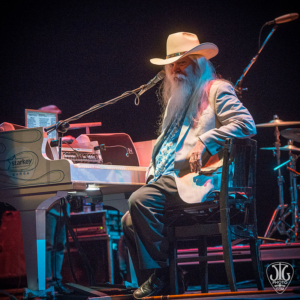 On this day in 2016, musician and songwriter Leon Russell died in his sleep at his suburban Nashville home in Mt. Juliet, Tennessee while recovering from heart surgery, at the age of 74. Born Claude Russell Bridges on April 2, 1942 in Lawton, Oklahoma. He was involved with numerous bestselling pop music records during his 60-year career. His genres included pop, country, rock, folk, gospel, bluegrass, rhythm and blues, folk rock, blues rock, surf, standards, and Tulsa Sound.
On this day in 2016, musician and songwriter Leon Russell died in his sleep at his suburban Nashville home in Mt. Juliet, Tennessee while recovering from heart surgery, at the age of 74. Born Claude Russell Bridges on April 2, 1942 in Lawton, Oklahoma. He was involved with numerous bestselling pop music records during his 60-year career. His genres included pop, country, rock, folk, gospel, bluegrass, rhythm and blues, folk rock, blues rock, surf, standards, and Tulsa Sound.
His collaborations rank as some of the most successful in music history, and as a touring musician he performed with hundreds of notable artists. He recorded 33 albums and at least 430 songs. He wrote “Delta Lady”, recorded by Joe Cocker, and organized and performed with Cocker’s Mad Dogs and Englishmen tour in 1970. His “A Song for You”, added to the Grammy Hall of Fame in 2018, has been recorded by more than 200 artists, and his “This Masquerade” by more than 75.
As a pianist, he played in his early years on albums by The Beach Boys, Dick Dale and Jan and Dean. On his first album, Leon Russell, in 1970, the musicians included Eric Clapton, Ringo Starr, and George Harrison. One of his biggest early fans, Elton John, said Russell was a “mentor” and an “inspiration”. They recorded their album The Union in 2010, which earned them a Grammy nomination.
Russell produced and played in recording sessions for, among others Bob Dylan, Frank Sinatra, Ike & Tina Turner, and The Rolling Stones. He wrote and recorded the hits “Tight Rope” and “Lady Blue”. He performed at The Concert for Bangladesh in 1971 along with Harrison, Dylan, and Clapton, for which he earned a Grammy Award.
His recordings earned six gold records. He received two Grammy awards from seven nominations. In 2011, he was inducted into both the Rock and Roll Hall of Fame and the Songwriters Hall of Fame.
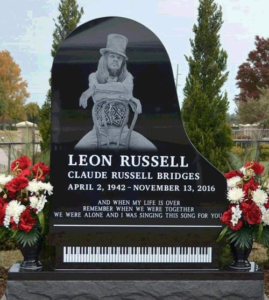 The Final Footprint
The Final Footprint
Russell’s funeral was on November 18 at Victory Baptist Church in Mt. Juliet, Tennessee, and a public memorial was held at The Oral Roberts University Mabee Center on November 20 in Tulsa, Oklahoma. He is interred at the Memorial Park Cemetery in Tulsa, Oklahoma.
Have you planned yours yet?
Follow TFF on twitter @RIPTFF
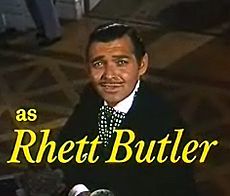 On this day in 1960, U.S. Army Air Corps veteran, Academy Award-winning actor, The King of Hollywood, Clark Gable, died in Los Angeles at the age of 59. Born William Clark Gable on 1 February 1901 in Cadiz, Ohio. Of course his most famous role was that of Rhett Butler with Vivien Leigh’s Scarlett O’Hara in Gone with the Wind (1939). His final film, The Misfits (1961), paired Gable with Marilyn Monroe in her last screen appearance. The screen play for the movie was written by Monroe’s then husband, Arthur Miller.
On this day in 1960, U.S. Army Air Corps veteran, Academy Award-winning actor, The King of Hollywood, Clark Gable, died in Los Angeles at the age of 59. Born William Clark Gable on 1 February 1901 in Cadiz, Ohio. Of course his most famous role was that of Rhett Butler with Vivien Leigh’s Scarlett O’Hara in Gone with the Wind (1939). His final film, The Misfits (1961), paired Gable with Marilyn Monroe in her last screen appearance. The screen play for the movie was written by Monroe’s then husband, Arthur Miller. 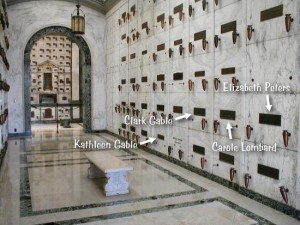 The Final Footprint – Gable is entombed next to Lombard in the Great Mausoleum, Sanctuary of Trust, Forest Lawn Memorial Park, Glendale, California. Other notable Final Footprints at Forest Lawn Glendale include; L. Frank Baum, Humphrey Bogart, Lon Chaney, Nat King Cole, Sam Cooke, Dorothy Dandridge, Sammy Davis, Jr., Walt Disney, Errol Flynn, Jean Harlow, Michael Jackson, Carole Lombard, Tom Mix, Casey Stengel, Jimmy Stewart, Elizabeth Taylor, and Spencer Tracy.
The Final Footprint – Gable is entombed next to Lombard in the Great Mausoleum, Sanctuary of Trust, Forest Lawn Memorial Park, Glendale, California. Other notable Final Footprints at Forest Lawn Glendale include; L. Frank Baum, Humphrey Bogart, Lon Chaney, Nat King Cole, Sam Cooke, Dorothy Dandridge, Sammy Davis, Jr., Walt Disney, Errol Flynn, Jean Harlow, Michael Jackson, Carole Lombard, Tom Mix, Casey Stengel, Jimmy Stewart, Elizabeth Taylor, and Spencer Tracy.
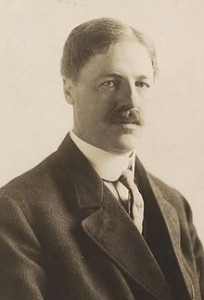 On this day in 1951, impressionist painter, Frank Weston Benson, died in Salem, Massachusetts at the age of 89. Born 24 March 1862 in Salem.
On this day in 1951, impressionist painter, Frank Weston Benson, died in Salem, Massachusetts at the age of 89. Born 24 March 1862 in Salem.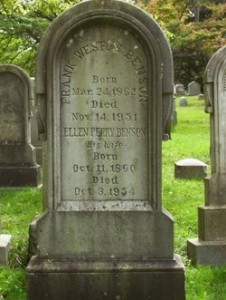 The Final Footprint – Benson is interred in Harmony Grove Cemetery in Salem alongside his wife Ellen Perry Benson. Their graves are marked by a large upright marble marker.
The Final Footprint – Benson is interred in Harmony Grove Cemetery in Salem alongside his wife Ellen Perry Benson. Their graves are marked by a large upright marble marker.




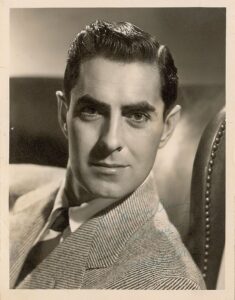 On this day in 1958, US Marine Corp veteran, actor Tyrone Power died from a heart attack in Madrid, aged 44. Born Tyrone Edmund Power III in Cincinnati, Ohio on 5 May 1914.
On this day in 1958, US Marine Corp veteran, actor Tyrone Power died from a heart attack in Madrid, aged 44. Born Tyrone Edmund Power III in Cincinnati, Ohio on 5 May 1914.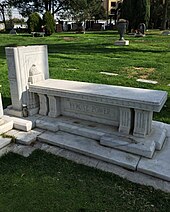
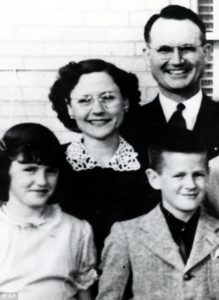 On this day in 1959, farmer Herbert Clutter (48), his wife Bonnie (45), their daughter Nancy (16), and their son Kenyon (15), were found bound and shot to death in various rooms of their home, on the family’s River Valley Farm on the outskirts of Holcomb, Kansas.
On this day in 1959, farmer Herbert Clutter (48), his wife Bonnie (45), their daughter Nancy (16), and their son Kenyon (15), were found bound and shot to death in various rooms of their home, on the family’s River Valley Farm on the outskirts of Holcomb, Kansas.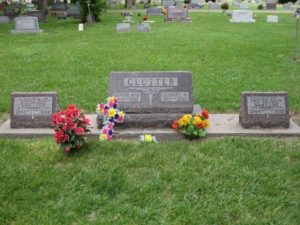
 n this day in 1990, chesnut colt and American thoroughbred race horse, Alydar, died at the age of 15. Foaled 23 March 1975 at Calumet Farms in Lexington, Kentucky; sire Raise a Native, dam Sweet Tooth, damsire On-And-On. Trained by John M. Veitch and ridden by jockey Jorge Velasquez, Alydar finished second to archrival Affirmed in all three Triple Crown Races in 1978. A feat never accomplished, before or since. In my opinion, their matchup in the Belmont Stakes ranks as the most exciting race in the history of the sport. Affirmed won by a head to claim racing’s 11th Triple Crown Winner. I watched all three races on television. Both horses were beautiful chestnuts and I was a fan of both, but I was hoping that Affirmed would win. Alydar was a major success as a stallion. His offspring include; Easy Goer, Alysheba and Strike the Gold.
n this day in 1990, chesnut colt and American thoroughbred race horse, Alydar, died at the age of 15. Foaled 23 March 1975 at Calumet Farms in Lexington, Kentucky; sire Raise a Native, dam Sweet Tooth, damsire On-And-On. Trained by John M. Veitch and ridden by jockey Jorge Velasquez, Alydar finished second to archrival Affirmed in all three Triple Crown Races in 1978. A feat never accomplished, before or since. In my opinion, their matchup in the Belmont Stakes ranks as the most exciting race in the history of the sport. Affirmed won by a head to claim racing’s 11th Triple Crown Winner. I watched all three races on television. Both horses were beautiful chestnuts and I was a fan of both, but I was hoping that Affirmed would win. Alydar was a major success as a stallion. His offspring include; Easy Goer, Alysheba and Strike the Gold.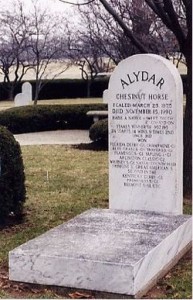 The Final Footprint – On November 13, 1990, Alydar appeared to have shattered his right hind leg in his stall at Calumet Farm in Lexington, Kentucky. Emergency surgery was performed the next day in an attempt to repair the injury, but the leg broke again. On November 15, Alydar was euthanized. At the time the owner of Calumet Farm was in dire trouble financially, but suspicions of foul play by the management were not raised until federal prosecutors investigated in the late 1990s. John Thomas (J.T.) Lundy was indicted and convicted in 2000 on separate but related fraud charges—bribing a bank executive for favorable loans—and served nearly four years in prison. The farm’s former attorney, Gary Matthews, was also convicted and received a 21-month prison sentence. The Texas Monthly described Alydar’s death as “a sweeping saga of greed, fraud, and almost unimaginable cruelty that could have been lifted straight from a best-selling Dick Francis horse-racing novel.”
The Final Footprint – On November 13, 1990, Alydar appeared to have shattered his right hind leg in his stall at Calumet Farm in Lexington, Kentucky. Emergency surgery was performed the next day in an attempt to repair the injury, but the leg broke again. On November 15, Alydar was euthanized. At the time the owner of Calumet Farm was in dire trouble financially, but suspicions of foul play by the management were not raised until federal prosecutors investigated in the late 1990s. John Thomas (J.T.) Lundy was indicted and convicted in 2000 on separate but related fraud charges—bribing a bank executive for favorable loans—and served nearly four years in prison. The farm’s former attorney, Gary Matthews, was also convicted and received a 21-month prison sentence. The Texas Monthly described Alydar’s death as “a sweeping saga of greed, fraud, and almost unimaginable cruelty that could have been lifted straight from a best-selling Dick Francis horse-racing novel.”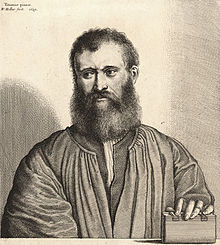 On this day in 1556, Florentine poet, writer on etiquette and society, diplomat, and inquisitor, Giovanni della Casa died probably in the Farnese palace in Rome at the age of 53. Born 28 June 1503 in Florence or Borgo San Lorenzo. He is celebrated for his famous treatise on polite behavior, Il Galateo overo de’ costumi (1558). From the time of its publication, this courtesy book has enjoyed success and influence. In the eighteenth century, critic Giuseppe Baretti wrote in The Italian Library (1757), “The little treatise is looked upon by many Italians as the most elegant thing, as to stile, that we have in our language.”
On this day in 1556, Florentine poet, writer on etiquette and society, diplomat, and inquisitor, Giovanni della Casa died probably in the Farnese palace in Rome at the age of 53. Born 28 June 1503 in Florence or Borgo San Lorenzo. He is celebrated for his famous treatise on polite behavior, Il Galateo overo de’ costumi (1558). From the time of its publication, this courtesy book has enjoyed success and influence. In the eighteenth century, critic Giuseppe Baretti wrote in The Italian Library (1757), “The little treatise is looked upon by many Italians as the most elegant thing, as to stile, that we have in our language.”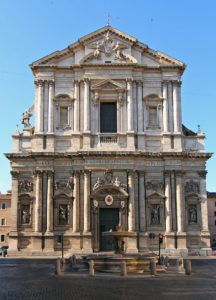 The Final Footprint – Casa is entombed in the Church of Sant’Andrea della Valle, Rome. Sant’Andrea della Valle is a minor basilica in the rione of Sant’Eustachio. The basilica is the general seat for the religious order of the Theatines. It is located at Piazza Vidoni, 6 at the intersection of Corso Vittorio Emanuele (facing facade) and Corso Rinascimento.
The Final Footprint – Casa is entombed in the Church of Sant’Andrea della Valle, Rome. Sant’Andrea della Valle is a minor basilica in the rione of Sant’Eustachio. The basilica is the general seat for the religious order of the Theatines. It is located at Piazza Vidoni, 6 at the intersection of Corso Vittorio Emanuele (facing facade) and Corso Rinascimento.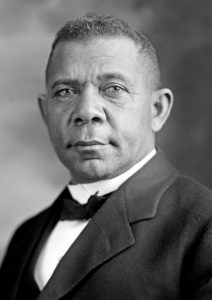 On this day in 1915, educator, author, orator, and advisor to presidents of the United States, Booker T. Washington died in Tuskegee,
On this day in 1915, educator, author, orator, and advisor to presidents of the United States, Booker T. Washington died in Tuskegee,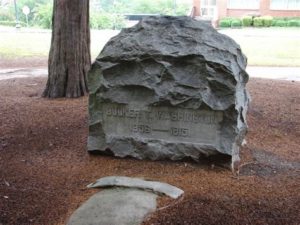 The Final Footprint
The Final Footprint
 On this day in 1868, composer, The Italian Mozart, Gioachino Rossini, died at his country house at Passy, France at the age of 76. Born Gioachino Antonio Rossini on 29 February 1792 in Pesaro, Italy. Best known for his 39 operas which inlcude Il barbiere di Siviglia (The Barber of Seville), Guillaume Tell (William Tell) and La cenerentola (Cinderella). A 30-year-old Rossini met Ludwig van Beethoven, then aged 51, in 1822. Communicating in writing, Beethoven noted: “Ah, Rossini. So you’re the composer of The Barber of Seville. I congratulate you. It will be played as long as Italian opera exists. Never try to write anything else but opera buffa; any other style would do violence to your nature.” That same year Rossini married the renowned opera singer Isabella Colbran. She died in 1845 and on 16 August 1846, he married Olympe Pélissier. During his life Rossini was photographed by Félix Nadar and Etienne Carjat and had his portrait painted by Giorces, Vincenzo Camuccini and Francesco Hayez. I saw Houston Grand Opera’s production of La cenerentola in October of 1995 with Cecilia Bartoli in the role of Angelina (Cinderella). I fell in love with opera, and Miss Bartoli, that night.
On this day in 1868, composer, The Italian Mozart, Gioachino Rossini, died at his country house at Passy, France at the age of 76. Born Gioachino Antonio Rossini on 29 February 1792 in Pesaro, Italy. Best known for his 39 operas which inlcude Il barbiere di Siviglia (The Barber of Seville), Guillaume Tell (William Tell) and La cenerentola (Cinderella). A 30-year-old Rossini met Ludwig van Beethoven, then aged 51, in 1822. Communicating in writing, Beethoven noted: “Ah, Rossini. So you’re the composer of The Barber of Seville. I congratulate you. It will be played as long as Italian opera exists. Never try to write anything else but opera buffa; any other style would do violence to your nature.” That same year Rossini married the renowned opera singer Isabella Colbran. She died in 1845 and on 16 August 1846, he married Olympe Pélissier. During his life Rossini was photographed by Félix Nadar and Etienne Carjat and had his portrait painted by Giorces, Vincenzo Camuccini and Francesco Hayez. I saw Houston Grand Opera’s production of La cenerentola in October of 1995 with Cecilia Bartoli in the role of Angelina (Cinderella). I fell in love with opera, and Miss Bartoli, that night. The Final Footprint – Rossini was entombed in the Rossini Private Mausoleum in Cimetière du Père Lachaise, Paris, Ile-de-France Region, France. In 1887, his remains were moved and entombed in the Basilica di Santa Croce, in Florence, at the request of the Italian government. The Basilica di Santa Croce (Basilica of the Holy Cross) is the principal Franciscan church in Florence, and a minor basilica of the Roman Catholic Church. It is situated on the Piazza di Santa Croce. It is the burial place of some of the most famous Italians; Michelangelo, Galileo, Machiavelli, and is known also as the Temple of the Italian Glories (Tempio dell’Itale Glorie). His private mausoleum remains unoccupied at Père Lachaise. Père Lachaise is the largest cemetery in Paris and one of the most visited cemeteries in the world. Bravo Rossini!
The Final Footprint – Rossini was entombed in the Rossini Private Mausoleum in Cimetière du Père Lachaise, Paris, Ile-de-France Region, France. In 1887, his remains were moved and entombed in the Basilica di Santa Croce, in Florence, at the request of the Italian government. The Basilica di Santa Croce (Basilica of the Holy Cross) is the principal Franciscan church in Florence, and a minor basilica of the Roman Catholic Church. It is situated on the Piazza di Santa Croce. It is the burial place of some of the most famous Italians; Michelangelo, Galileo, Machiavelli, and is known also as the Temple of the Italian Glories (Tempio dell’Itale Glorie). His private mausoleum remains unoccupied at Père Lachaise. Père Lachaise is the largest cemetery in Paris and one of the most visited cemeteries in the world. Bravo Rossini! On this day in 1903, Danish-French Impressionist and Neo-Impressionist painter Camille Pissarro died in Paris at the age of 73. Born
On this day in 1903, Danish-French Impressionist and Neo-Impressionist painter Camille Pissarro died in Paris at the age of 73. Born  The Final Footprint – Pissarro was entombed in the Cimetière du Père Lachaise, Paris, Ile-de-France Region, France, the largest cemetery in the city of Paris (44 hectares or 110 acres). Père Lachaise is in the 20th
The Final Footprint – Pissarro was entombed in the Cimetière du Père Lachaise, Paris, Ile-de-France Region, France, the largest cemetery in the city of Paris (44 hectares or 110 acres). Père Lachaise is in the 20th 

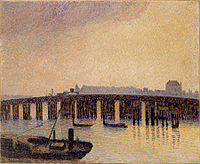






















 On this day in 1952 writer of children’s books, including Goodnight Moon and The Runaway Bunny, both illustrated by Clement Hurd, Margaret Wise Brown died in Nice, France at 42 of an embolism. She has been called “the laureate of the nursery” for her achievements. Born 23 May 1910 in Brooklyn.
On this day in 1952 writer of children’s books, including Goodnight Moon and The Runaway Bunny, both illustrated by Clement Hurd, Margaret Wise Brown died in Nice, France at 42 of an embolism. She has been called “the laureate of the nursery” for her achievements. Born 23 May 1910 in Brooklyn. The Final Footprint – While on a book tour in Nice, France, she died shortly after surgery for a ruptured appendix. Kicking up her leg to show her nurses how well she was feeling caused a blood clot that had formed in her leg to dislodge and travel to her heart. Her cremated remains were scattered at her island home, “The Only House,” in Vinalhaven, Maine.
The Final Footprint – While on a book tour in Nice, France, she died shortly after surgery for a ruptured appendix. Kicking up her leg to show her nurses how well she was feeling caused a blood clot that had formed in her leg to dislodge and travel to her heart. Her cremated remains were scattered at her island home, “The Only House,” in Vinalhaven, Maine. On this day in 1974 chemical technician and labor union activist Karen Silkwood died in a car crash under unclear circumstances near Crescent, Oklahoma at the age of 28. Born Karen Gay Silkwood on February 19, 1946 in Longview, Texas. Primarily known for raising concerns about corporate practices related to health and safety of workers in a nuclear facility. Following her mysterious death her estate filed a lawsuit against chemical company Kerr-McGee, which was eventually settled for $1.38 million. Her story was chronicled in Mike Nichols‘s 1983 Academy Award-nominated film Silkwood in which she was portrayed by Meryl Streep.
On this day in 1974 chemical technician and labor union activist Karen Silkwood died in a car crash under unclear circumstances near Crescent, Oklahoma at the age of 28. Born Karen Gay Silkwood on February 19, 1946 in Longview, Texas. Primarily known for raising concerns about corporate practices related to health and safety of workers in a nuclear facility. Following her mysterious death her estate filed a lawsuit against chemical company Kerr-McGee, which was eventually settled for $1.38 million. Her story was chronicled in Mike Nichols‘s 1983 Academy Award-nominated film Silkwood in which she was portrayed by Meryl Streep. The Final Footprint
The Final Footprint On this day in 2016, musician and songwriter Leon Russell died
On this day in 2016, musician and songwriter Leon Russell died  The Final Footprint
The Final Footprint On this day in 1094, King of Scots, Duncan II, died at the Battle of Mondoynes. Born Donnchad mac Maíl Coluim before c. 1060. Son of Malcolm III (Máel Coluim mac Donnchada) and his first wife Ingibiorg Finnsdottir, widow of Thorfinn Sigurdsson. About 1093–1094 Duncan married Uchtreda of Northumbria, daughter of Gospatric, Earl of Dunbar and Northumbria. Duncan deposed his uncle Donald III but reigned for only six months. He was succeeded by Donald III.
On this day in 1094, King of Scots, Duncan II, died at the Battle of Mondoynes. Born Donnchad mac Maíl Coluim before c. 1060. Son of Malcolm III (Máel Coluim mac Donnchada) and his first wife Ingibiorg Finnsdottir, widow of Thorfinn Sigurdsson. About 1093–1094 Duncan married Uchtreda of Northumbria, daughter of Gospatric, Earl of Dunbar and Northumbria. Duncan deposed his uncle Donald III but reigned for only six months. He was succeeded by Donald III.  I am very proud of my Scottish heritage. In My Defens, God Me Defend!
I am very proud of my Scottish heritage. In My Defens, God Me Defend!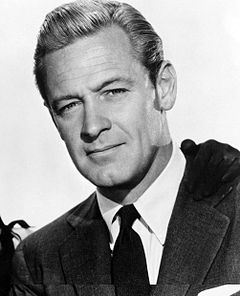 On this day in 1981 Academy Award winning actor William Holden bled to death from a head wound suffered in a fall in his apartment in Santa Monica, California at the age of 63. Born William Franklin Beedle, Jr. in O’Fallon, Illinois on 17 April 1918. In my opinion, one of the most popular movie stars of all time, Holden was one of the biggest box office draws of the 1950s. Holden won the Academy Award for Best Actor in 1953 for his role in Stalag 17, and a Primetime Emmy Award for Outstanding Lead Actor for his role in the 1973 television film The Blue Knight. Holden starred in some of Hollywood’s most popular and critically acclaimed films, including such blockbusters as Sunset Boulevard, The Bridge on the River Kwai, The Wild Bunch, Picnic, The Towering Inferno, and Network. He was named one of the “Top 10 Stars of the Year” six times (1954–1958, 1961). Holden married actress Ardis Ankerson (stage name Brenda Marshall) (1941 – 1971 divorce). They served as best man and matron of honor as the only guests at the wedding of Ronald Reagan and Nancy Davis. During the filming of Sabrina (1954), Audrey Hepburn and Holden became romantically involved. Holden met French actress Capucine in the early 1960s. The two starred in the films The Lion (1962) and The 7th Dawn (1964). They began a two-year affair. In 1972, Holden began a nine-year relationship with actress Stefanie Powers. My favorite Holden movies; Sabrina (1954), The Horse Soldiers (1959) and The Wild Bunch (1969).
On this day in 1981 Academy Award winning actor William Holden bled to death from a head wound suffered in a fall in his apartment in Santa Monica, California at the age of 63. Born William Franklin Beedle, Jr. in O’Fallon, Illinois on 17 April 1918. In my opinion, one of the most popular movie stars of all time, Holden was one of the biggest box office draws of the 1950s. Holden won the Academy Award for Best Actor in 1953 for his role in Stalag 17, and a Primetime Emmy Award for Outstanding Lead Actor for his role in the 1973 television film The Blue Knight. Holden starred in some of Hollywood’s most popular and critically acclaimed films, including such blockbusters as Sunset Boulevard, The Bridge on the River Kwai, The Wild Bunch, Picnic, The Towering Inferno, and Network. He was named one of the “Top 10 Stars of the Year” six times (1954–1958, 1961). Holden married actress Ardis Ankerson (stage name Brenda Marshall) (1941 – 1971 divorce). They served as best man and matron of honor as the only guests at the wedding of Ronald Reagan and Nancy Davis. During the filming of Sabrina (1954), Audrey Hepburn and Holden became romantically involved. Holden met French actress Capucine in the early 1960s. The two starred in the films The Lion (1962) and The 7th Dawn (1964). They began a two-year affair. In 1972, Holden began a nine-year relationship with actress Stefanie Powers. My favorite Holden movies; Sabrina (1954), The Horse Soldiers (1959) and The Wild Bunch (1969). On this day in 2003 actor Jonathan Brandis died at Cedars-Sinai Medical Center in Los Angeles from injuries sustained in a hanging, aged 27. Born Jonathan Gregory Brandis in Danbury, Connecticut on 13 April 1976.
On this day in 2003 actor Jonathan Brandis died at Cedars-Sinai Medical Center in Los Angeles from injuries sustained in a hanging, aged 27. Born Jonathan Gregory Brandis in Danbury, Connecticut on 13 April 1976. On this day in 2016, actress and centenarian Lupita Tovar died in Los Angeles at the age of 106. Born Guadalupe Natalia Tovar on 27 July 1910 Perhaps best known for her starring role in the 1931 Spanish language version of Drácula, filmed in Los Angeles by Universal Pictures at night using the same sets as the Bela Lugosi version, but with a different cast and director. She also starred in the 1932 film Santa, one of the first Mexican sound films, and one of the first commercial Spanish-language sound films.
On this day in 2016, actress and centenarian Lupita Tovar died in Los Angeles at the age of 106. Born Guadalupe Natalia Tovar on 27 July 1910 Perhaps best known for her starring role in the 1931 Spanish language version of Drácula, filmed in Los Angeles by Universal Pictures at night using the same sets as the Bela Lugosi version, but with a different cast and director. She also starred in the 1932 film Santa, one of the first Mexican sound films, and one of the first commercial Spanish-language sound films.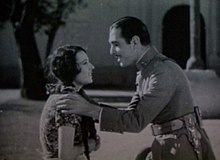

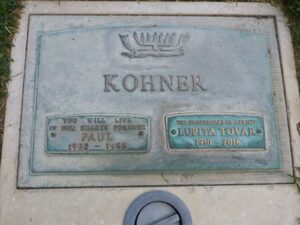 The Final Footprint
The Final Footprint And on this day in 2018, United States Army veteran,
And on this day in 2018, United States Army veteran, 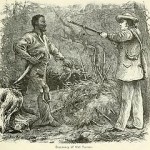 On this day in 1831 African American slave Nat Turner was hanged after being convicted of leading a slave rebellion in Virginia. Born 2 October 1800 in Southampton County, Virginia. The rebellion resulted in 60 white deaths. Local residents responded with at least 200 black deaths. In the aftermath, the state executed 56 blacks accused of being part of Turner’s slave rebellion. Across Virginia and other southern states, state legislators passed new laws prohibiting education of slaves and free blacks, restricting rights of assembly and other civil rights for free blacks, and requiring white ministers to be present at black worship services.
On this day in 1831 African American slave Nat Turner was hanged after being convicted of leading a slave rebellion in Virginia. Born 2 October 1800 in Southampton County, Virginia. The rebellion resulted in 60 white deaths. Local residents responded with at least 200 black deaths. In the aftermath, the state executed 56 blacks accused of being part of Turner’s slave rebellion. Across Virginia and other southern states, state legislators passed new laws prohibiting education of slaves and free blacks, restricting rights of assembly and other civil rights for free blacks, and requiring white ministers to be present at black worship services. On this day in 1855, Danish philosopher, theologian, poet, social critic, and religious author, the “Father of Existentialism”, Søren Kierkegaard died in Frederik’s Hospital in Copenhagen at the age of 42. Born Søren Aabye Kierkegaard on 5 May 1813 in Copenhagen. Kierkegaard wrote critical texts on organized religion, Christendom, morality, ethics, psychology and philosophy of religion, displaying a fondness for metaphor, irony and parables. Much of his philosophical work deals with the issues of how one lives as a “single individual”, giving priority to concrete human reality over abstract thinking, and highlighting the importance of personal choice and commitment. He was a fierce critic of idealist intellectuals and philosophers of his time, such as Swedenborg, Hegel, Goethe, Fichte, Schelling, Schlegel, and Hans Christian Andersen.
On this day in 1855, Danish philosopher, theologian, poet, social critic, and religious author, the “Father of Existentialism”, Søren Kierkegaard died in Frederik’s Hospital in Copenhagen at the age of 42. Born Søren Aabye Kierkegaard on 5 May 1813 in Copenhagen. Kierkegaard wrote critical texts on organized religion, Christendom, morality, ethics, psychology and philosophy of religion, displaying a fondness for metaphor, irony and parables. Much of his philosophical work deals with the issues of how one lives as a “single individual”, giving priority to concrete human reality over abstract thinking, and highlighting the importance of personal choice and commitment. He was a fierce critic of idealist intellectuals and philosophers of his time, such as Swedenborg, Hegel, Goethe, Fichte, Schelling, Schlegel, and Hans Christian Andersen.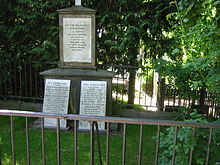 The Final Footprint – Kierkegaard is interred in the Assistens Kirkegård in the Nørrebro section of Copenhagen. At Kierkegaard’s funeral, his nephew Henrik Lund caused a disturbance by protesting Kierkegaard’s burial by the official church. Lund maintained that Kierkegaard would never have approved, had he been alive, as he had broken from and denounced the institution. Hans Christian Andersen is also interred at Assistens Kirkegård.
The Final Footprint – Kierkegaard is interred in the Assistens Kirkegård in the Nørrebro section of Copenhagen. At Kierkegaard’s funeral, his nephew Henrik Lund caused a disturbance by protesting Kierkegaard’s burial by the official church. Lund maintained that Kierkegaard would never have approved, had he been alive, as he had broken from and denounced the institution. Hans Christian Andersen is also interred at Assistens Kirkegård.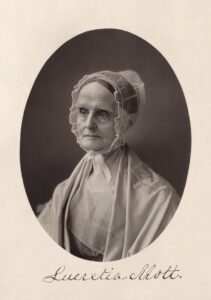 n this day in 1880 American Quaker, abolitionist, women’s rights activist, social reformer, Lucretia Mott died of pneumonia at her home, Roadside, in the district now known as La Mott, Cheltenham, Pennsylvania, aged 87. Born Lucretia Coffin on January 3, 1793 in Nantucket, Massachusetts.
n this day in 1880 American Quaker, abolitionist, women’s rights activist, social reformer, Lucretia Mott died of pneumonia at her home, Roadside, in the district now known as La Mott, Cheltenham, Pennsylvania, aged 87. Born Lucretia Coffin on January 3, 1793 in Nantucket, Massachusetts.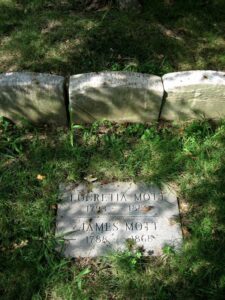
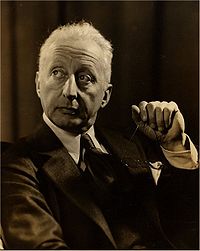 On this day in 1945, Academy Award-winning composer, Jerome Kern, died from a cerebral hemorrhage while walking at the corner of Park Avenue and 57th Street in New York City at the age of 60, with fellow composer Oscar Hammerstein II at his side. Born Jerome David Kern on 27 January 1885 in New York City. In my opinion, one of the most important American theatre composers. He wrote over 700 songs including; “Ol’ Man River”, “Can’t Help Lovin’ Dat Man”, “A Fine Romance”, “Smoke Gets in Your Eyes”, “All the Things You Are”, “The Way You Look Tonight”, “Long Ago (and Far Away), “The Last Time I Saw Paris” and “Lovely to Look At”. Kern wrote the musical stage version of Edna Ferber’s Show Boat. Arguably his greatest score, it was a huge success. American musical theatre would never be the same. Kern named his yacht Show Boat.
On this day in 1945, Academy Award-winning composer, Jerome Kern, died from a cerebral hemorrhage while walking at the corner of Park Avenue and 57th Street in New York City at the age of 60, with fellow composer Oscar Hammerstein II at his side. Born Jerome David Kern on 27 January 1885 in New York City. In my opinion, one of the most important American theatre composers. He wrote over 700 songs including; “Ol’ Man River”, “Can’t Help Lovin’ Dat Man”, “A Fine Romance”, “Smoke Gets in Your Eyes”, “All the Things You Are”, “The Way You Look Tonight”, “Long Ago (and Far Away), “The Last Time I Saw Paris” and “Lovely to Look At”. Kern wrote the musical stage version of Edna Ferber’s Show Boat. Arguably his greatest score, it was a huge success. American musical theatre would never be the same. Kern named his yacht Show Boat.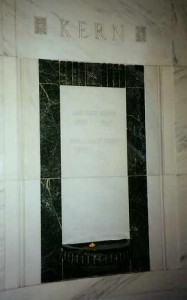
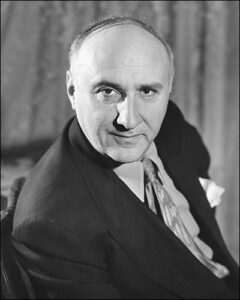 On this day in 1979 film composer and conductor Dimitri Tiomkin died in London two weeks after fracturing his pelvis in a fall, aged 85. Born Dimitri Zinovievich Tiomkin on May 10, 1894 in Kremenchug, Poltava Governorate, Russian Empire.
On this day in 1979 film composer and conductor Dimitri Tiomkin died in London two weeks after fracturing his pelvis in a fall, aged 85. Born Dimitri Zinovievich Tiomkin on May 10, 1894 in Kremenchug, Poltava Governorate, Russian Empire.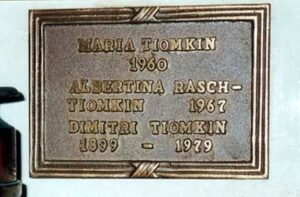
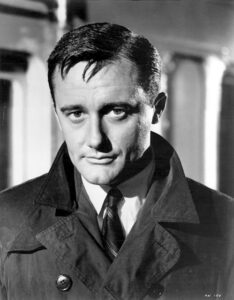 And on this day in 2016 stage, film and television actor, author, political activist and advertising spokesperson whose career spanned nearly six decades, Robert Vaughn died in a hospice in Danbury, Connecticut from leukemia, aged 83. Born Robert Francis Vaughn on November 22, 1932 at Charity Hospital in Manhattan.
And on this day in 2016 stage, film and television actor, author, political activist and advertising spokesperson whose career spanned nearly six decades, Robert Vaughn died in a hospice in Danbury, Connecticut from leukemia, aged 83. Born Robert Francis Vaughn on November 22, 1932 at Charity Hospital in Manhattan.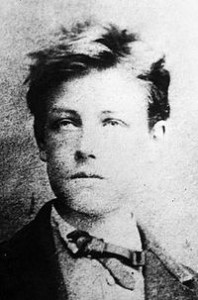 On this day in 1891, poet, Arthur Rimbaud, died in Marseille, France at the age of 37 from bone cancer. Born Jean Nicolas Arthur Rimbaud on 20 October 1854 in Charleville, Ardennes, France. He produced his best known poems in his late teens. Victor Hugo called him the “enfant Shakespeare”. As part of the decadent movement, Rimbaud influenced modern literature, music and art. He had a short and torrid affair with fellow poet Paul Verlaine. Rimbaud never married. He traveled extensively over three continents. His poetry, as well as his life, are said to have influenced writers, musicians and artists including; Pablo Picasso, Dylan Thomas, Vladimir Nabokov, Bob Dylan, Patti Smith and Jim Morrison. My favorite poem of his is Une Saison en Enfer (A Season in Hell) (1873). The French painter Henri Fantin-Latour depicted Rimbaud and Verlaine in his 1872 painting Around the Table (Writers).
On this day in 1891, poet, Arthur Rimbaud, died in Marseille, France at the age of 37 from bone cancer. Born Jean Nicolas Arthur Rimbaud on 20 October 1854 in Charleville, Ardennes, France. He produced his best known poems in his late teens. Victor Hugo called him the “enfant Shakespeare”. As part of the decadent movement, Rimbaud influenced modern literature, music and art. He had a short and torrid affair with fellow poet Paul Verlaine. Rimbaud never married. He traveled extensively over three continents. His poetry, as well as his life, are said to have influenced writers, musicians and artists including; Pablo Picasso, Dylan Thomas, Vladimir Nabokov, Bob Dylan, Patti Smith and Jim Morrison. My favorite poem of his is Une Saison en Enfer (A Season in Hell) (1873). The French painter Henri Fantin-Latour depicted Rimbaud and Verlaine in his 1872 painting Around the Table (Writers).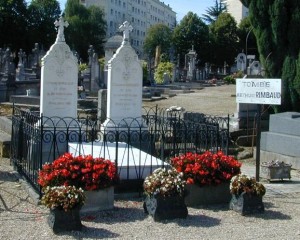 The Final Footprint – Rimbaud is entombed in Charleville-Mezieres Cimetière in Charleville-Mezieres, Champagne-Ardenne Region, France. His tomb is marked by a large upright marble marker. His inscription reads; Priez pour lui (Pray for him).
The Final Footprint – Rimbaud is entombed in Charleville-Mezieres Cimetière in Charleville-Mezieres, Champagne-Ardenne Region, France. His tomb is marked by a large upright marble marker. His inscription reads; Priez pour lui (Pray for him).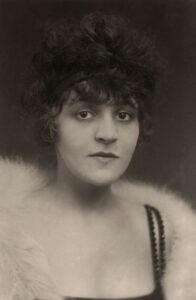 On this day in 1928 dancer, actress, writer, libertine, subject of Otto Dix paintings, Anita Berber died in a Kreuzberg, Berlin hospital, from tuberculosis, aged 29. Born 10 June 1899 in Leipzig.
On this day in 1928 dancer, actress, writer, libertine, subject of Otto Dix paintings, Anita Berber died in a Kreuzberg, Berlin hospital, from tuberculosis, aged 29. Born 10 June 1899 in Leipzig. Her dancer, friend and sometime lover Sebastian Droste, who performed in the film Algol (1920), was thin and had black hair with gelled up curls much like sideburns. Neither of them wore much more than lowslung loincloths and Anita occasionally a corsage, placed well below her breasts.
Her dancer, friend and sometime lover Sebastian Droste, who performed in the film Algol (1920), was thin and had black hair with gelled up curls much like sideburns. Neither of them wore much more than lowslung loincloths and Anita occasionally a corsage, placed well below her breasts.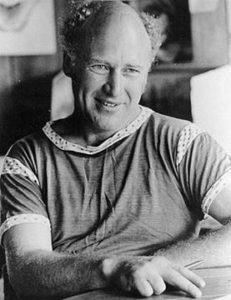 On this day in 2001, novelist, essayist, and countercultural figure Ken Kesey died from complications of liver cancer in Eugene, Oregon, at age 66. Born Kenneth Elton Kesey on September 17, 1935 in La Junta, Colorado. He considered himself a link between the Beat Generation of the 1950s and the hippies of the 1960s.
On this day in 2001, novelist, essayist, and countercultural figure Ken Kesey died from complications of liver cancer in Eugene, Oregon, at age 66. Born Kenneth Elton Kesey on September 17, 1935 in La Junta, Colorado. He considered himself a link between the Beat Generation of the 1950s and the hippies of the 1960s.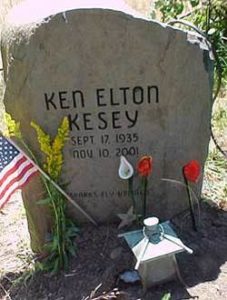 The Final Footprint
The Final Footprint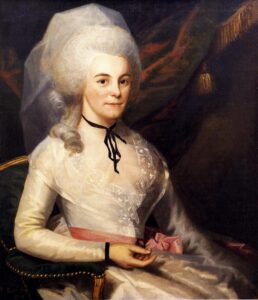 On this day in 1854, socialite and philanthropist, wife of American Founding Father Alexander Hamilton, Elizabeth Hamilton died in Washington, D.C., at age 97. She was a defender of her husband’s works and co-founder and deputy director of Graham Windham, the first private orphanage in New York City. Hamilton is recognized as an early American philanthropist for her work with the Orphan Asylum Society.
On this day in 1854, socialite and philanthropist, wife of American Founding Father Alexander Hamilton, Elizabeth Hamilton died in Washington, D.C., at age 97. She was a defender of her husband’s works and co-founder and deputy director of Graham Windham, the first private orphanage in New York City. Hamilton is recognized as an early American philanthropist for her work with the Orphan Asylum Society.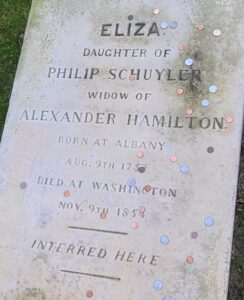 The Final Footprint
The Final Footprint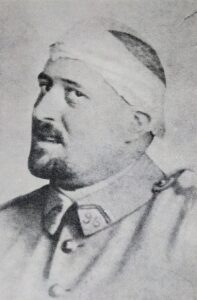 On this day in 1918, poet, playwright, short story writer, and novelist, Guillaume Apollinaire died in Paris during the Spanish flu pandemic at the age of 38. Born on 26 August 1880 in Rome.
On this day in 1918, poet, playwright, short story writer, and novelist, Guillaume Apollinaire died in Paris during the Spanish flu pandemic at the age of 38. Born on 26 August 1880 in Rome.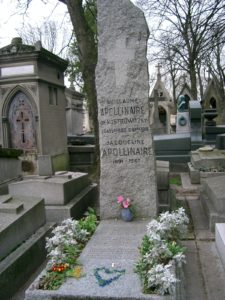 The Final Footprint
The Final Footprint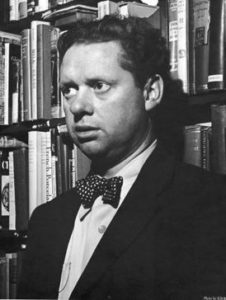 On this day in 1953, poet and writer, Dylan Thomas, died in St. Vincent’s Hospital in Greenwich Village from pneumonia at the age of 39. Born Dylan Marlais Thomas on 27 October 1914 in Swansea, South Wales. One of my favorite poets. I particularly like the villanelle for his dying father, “Do not go gentle into that good night” and the poem “And death shall have no dominion”. Thomas met the dancer Caitlin MacNamara in the Wheatsheaf pub in London’s West End. They were married on 11 July 1937 in Cornwall. Their marriage was a stormy affair, fuelled by alcohol and infidelity, though the couple remained together until Dylan’s death. I am certainly proud of my own Welsh heritage. Cymru am byth! Wales forever!
On this day in 1953, poet and writer, Dylan Thomas, died in St. Vincent’s Hospital in Greenwich Village from pneumonia at the age of 39. Born Dylan Marlais Thomas on 27 October 1914 in Swansea, South Wales. One of my favorite poets. I particularly like the villanelle for his dying father, “Do not go gentle into that good night” and the poem “And death shall have no dominion”. Thomas met the dancer Caitlin MacNamara in the Wheatsheaf pub in London’s West End. They were married on 11 July 1937 in Cornwall. Their marriage was a stormy affair, fuelled by alcohol and infidelity, though the couple remained together until Dylan’s death. I am certainly proud of my own Welsh heritage. Cymru am byth! Wales forever! The Final Footprint – Following his death, Thomas’ body was brought back to Wales for burial. Thomas’ funeral took place at St Martin’s Church in Laugharne on 24 November. Thomas’ coffin was carried by six friends from the village. The procession to the church was filmed and the wake took place at Brown’s Hotel. Thomas is interred in Saint Martin’s Churchyard. His grave is marked by a white cross. There is a statue of Thomas in Swansea and a memorial. The memorial is a small rock in an enclosed garden in Cwmdonkin Park. The rock is inscribed with the closing lines from his poem Fern Hill;
The Final Footprint – Following his death, Thomas’ body was brought back to Wales for burial. Thomas’ funeral took place at St Martin’s Church in Laugharne on 24 November. Thomas’ coffin was carried by six friends from the village. The procession to the church was filmed and the wake took place at Brown’s Hotel. Thomas is interred in Saint Martin’s Churchyard. His grave is marked by a white cross. There is a statue of Thomas in Swansea and a memorial. The memorial is a small rock in an enclosed garden in Cwmdonkin Park. The rock is inscribed with the closing lines from his poem Fern Hill;  On this day in 2004, journalist and writer Stieg Larsson died from a heart attack after climbing the stairs to work in Stockholm, at the age of 50. Born Karl Stig-Erland Larsson on 15 August 1954 in Skelleftehamn, Västerbottens län, Sweden. Perhaps best known for writing the Millennium trilogy of crime novels, which were published posthumously, starting in 2005, after his sudden death. The trilogy was adapted as three motion pictures in Sweden, and one in the U.S. (for the first book only). The publisher commissioned David Lagercrantz to expand the trilogy into a longer series. For much of his life, Larsson lived and worked in Stockholm. His journalistic work covered socialist politics and he acted as an independent researcher of right-wing extremism.
On this day in 2004, journalist and writer Stieg Larsson died from a heart attack after climbing the stairs to work in Stockholm, at the age of 50. Born Karl Stig-Erland Larsson on 15 August 1954 in Skelleftehamn, Västerbottens län, Sweden. Perhaps best known for writing the Millennium trilogy of crime novels, which were published posthumously, starting in 2005, after his sudden death. The trilogy was adapted as three motion pictures in Sweden, and one in the U.S. (for the first book only). The publisher commissioned David Lagercrantz to expand the trilogy into a longer series. For much of his life, Larsson lived and worked in Stockholm. His journalistic work covered socialist politics and he acted as an independent researcher of right-wing extremism. The Final Footprint
The Final Footprint On this day in 1674, poet John Milton, died in Bunhill, London, England at the age of 65 from kidney failure. Born on 9 December 1608 in Bread Street, London, England. Best known for his epic poem in blank verse, Paradise Lost (1667). The poem concerns the Christian story of the Fall of Man; the temptation of Adam and Eve by the fallen angel Satan and their expulsion from the Garden of Eden. Milton incorporates Paganism, classical Greek references, and Christianity within the poem. It deals with diverse topics from marriage, politics to monarchy and grapples with many difficult theological issues, including; fate, predestination, the Trinity, the introduction of sin and death into the world, angels, fallen angels, Satan, and the war in heaven. Milton draws on his knowledge of languages and diverse sources – primarily Genesis, much of the New Testament, the deuterocanonical Book of Enoch, and other parts of the Old Testament. Milton’s epic is generally considered one of the greatest literary works in the English language. He remains generally regarded as one of the most significant writer’s in the English language.
On this day in 1674, poet John Milton, died in Bunhill, London, England at the age of 65 from kidney failure. Born on 9 December 1608 in Bread Street, London, England. Best known for his epic poem in blank verse, Paradise Lost (1667). The poem concerns the Christian story of the Fall of Man; the temptation of Adam and Eve by the fallen angel Satan and their expulsion from the Garden of Eden. Milton incorporates Paganism, classical Greek references, and Christianity within the poem. It deals with diverse topics from marriage, politics to monarchy and grapples with many difficult theological issues, including; fate, predestination, the Trinity, the introduction of sin and death into the world, angels, fallen angels, Satan, and the war in heaven. Milton draws on his knowledge of languages and diverse sources – primarily Genesis, much of the New Testament, the deuterocanonical Book of Enoch, and other parts of the Old Testament. Milton’s epic is generally considered one of the greatest literary works in the English language. He remains generally regarded as one of the most significant writer’s in the English language. 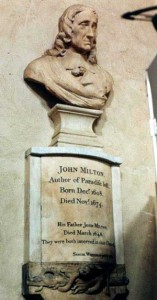
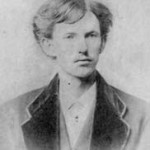 On this day in 1887, dentist, gambler, gunfighter of the American Old West, usually remembered for his friendship with Wyatt Earp and his involvement in the Gunfight at the O.K. Corral, Doc Holliday died from tuberculosis in the Hotel Glenwood in Glenwood Springs, Colorado at the age of 36. Born John Henry Holliday on 14 August 1851 in Griffin, Georgia. The legend and mystique of his life is so great that he has been mentioned in countless books, and portrayed by various actors in numerous movies and television series. Debate continues about the exploits of his life. Earp said, “Doc was a dentist, not a lawman or an assassin, whom necessity had made a gambler; a gentleman whom disease had made a frontier vagabond; a philosopher whom life had made a caustic wit; a long lean ash-blond fellow nearly dead with consumption, and at the same time the most skillful gambler and the nerviest, speediest, deadliest man with a six-gun that I ever knew.”
On this day in 1887, dentist, gambler, gunfighter of the American Old West, usually remembered for his friendship with Wyatt Earp and his involvement in the Gunfight at the O.K. Corral, Doc Holliday died from tuberculosis in the Hotel Glenwood in Glenwood Springs, Colorado at the age of 36. Born John Henry Holliday on 14 August 1851 in Griffin, Georgia. The legend and mystique of his life is so great that he has been mentioned in countless books, and portrayed by various actors in numerous movies and television series. Debate continues about the exploits of his life. Earp said, “Doc was a dentist, not a lawman or an assassin, whom necessity had made a gambler; a gentleman whom disease had made a frontier vagabond; a philosopher whom life had made a caustic wit; a long lean ash-blond fellow nearly dead with consumption, and at the same time the most skillful gambler and the nerviest, speediest, deadliest man with a six-gun that I ever knew.” The Final Footprint – Holliday is buried in Linwood Cemetery overlooking Glenwood Springs. The exact location of his grave was lost. Among the more notable portrayals of Holliday on film include; Kirk Douglas, Jason Robards, Stacy Keach, Dennis Hopper, Val Kilmer, and Dennis Quaid.
The Final Footprint – Holliday is buried in Linwood Cemetery overlooking Glenwood Springs. The exact location of his grave was lost. Among the more notable portrayals of Holliday on film include; Kirk Douglas, Jason Robards, Stacy Keach, Dennis Hopper, Val Kilmer, and Dennis Quaid.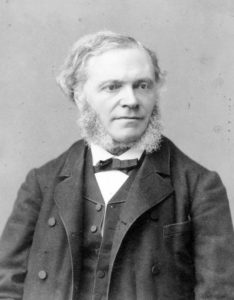 On this day in 1890, composer, pianist, organist, and music teacher César Franck died in Paris at the age of 67. Born César-Auguste-Jean-Guillaume-Hubert Franck on 10 December 1822 in Liège, in what is now Belgium (though at the time of his birth it was part of the United Kingdom of the Netherlands). He studied privately in Paris from 1835. After a brief return to Belgium, and an unfavorable reception to an early oratorio Ruth, he moved to Paris, where he married and embarked on a career as teacher and organist. He gained a reputation as a formidable improviser, and travelled widely in France to demonstrate new instruments built by Aristide Cavaillé-Coll.
On this day in 1890, composer, pianist, organist, and music teacher César Franck died in Paris at the age of 67. Born César-Auguste-Jean-Guillaume-Hubert Franck on 10 December 1822 in Liège, in what is now Belgium (though at the time of his birth it was part of the United Kingdom of the Netherlands). He studied privately in Paris from 1835. After a brief return to Belgium, and an unfavorable reception to an early oratorio Ruth, he moved to Paris, where he married and embarked on a career as teacher and organist. He gained a reputation as a formidable improviser, and travelled widely in France to demonstrate new instruments built by Aristide Cavaillé-Coll.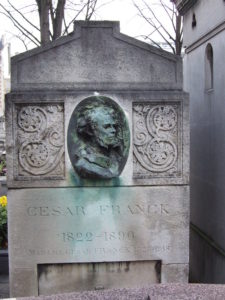
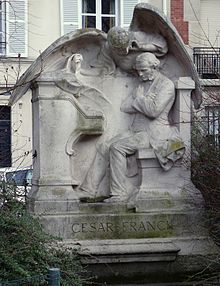
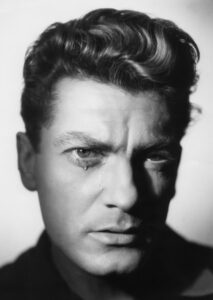 On this day in 1998 actor, writer, director, sculptor, Jean Cocteau’s muse and lover, Jean Marais died from cardiovascular disease in Cannes, aged 84. Born Jean-Alfred Villain-Marais in Cherbourg, France on 11 December 1913.
On this day in 1998 actor, writer, director, sculptor, Jean Cocteau’s muse and lover, Jean Marais died from cardiovascular disease in Cannes, aged 84. Born Jean-Alfred Villain-Marais in Cherbourg, France on 11 December 1913. The Final Footprint
The Final Footprint And on this day in 2020 game show host and television personality Alex Trebek died at his home in Los Angeles from pancreatic cancer, aged 80. Born George Alexander Trebek on July 22, 1940, in Sudbury, Ontario, Canada.
And on this day in 2020 game show host and television personality Alex Trebek died at his home in Los Angeles from pancreatic cancer, aged 80. Born George Alexander Trebek on July 22, 1940, in Sudbury, Ontario, Canada. On this day in 1980, United States Marine Corp veteran, Academy Award-nominated actor, The King of Cool, Steve McQueen, died in Ciudad Juárez, Chihuahua, Mexico at the age of 50 from complications related to pleural mesothelioma. Born Terence Steven McQueen on 24 March 1930 in Beech Grove, Indiana.
On this day in 1980, United States Marine Corp veteran, Academy Award-nominated actor, The King of Cool, Steve McQueen, died in Ciudad Juárez, Chihuahua, Mexico at the age of 50 from complications related to pleural mesothelioma. Born Terence Steven McQueen on 24 March 1930 in Beech Grove, Indiana. On this day in November 1993; jazz singer and entertainer Adelaide Hall died at London’s Charing Cross Hospital aged 92. Born Adelaide Louise Hall on 20 October 1901 in Brooklyn. Her long career spanned more than 70 years from 1921 until her death and she was a major figure in the Harlem Renaissance. Hall entered the Guinness Book of World Records in 2003 as the world’s most enduring recording artist, having released material over eight consecutive decades. She performed with major artists such as Art Tatum, Ethel Waters, Josephine Baker, Louis Armstrong, Lena Horne, Cab Calloway, Fela Sowande, Rudy Vallee and Jools Holland, and recorded as a jazz singer with Duke Ellington (with whom she made her most famous recording, “Creole Love Call” in 1927) and with Fats Waller.
On this day in November 1993; jazz singer and entertainer Adelaide Hall died at London’s Charing Cross Hospital aged 92. Born Adelaide Louise Hall on 20 October 1901 in Brooklyn. Her long career spanned more than 70 years from 1921 until her death and she was a major figure in the Harlem Renaissance. Hall entered the Guinness Book of World Records in 2003 as the world’s most enduring recording artist, having released material over eight consecutive decades. She performed with major artists such as Art Tatum, Ethel Waters, Josephine Baker, Louis Armstrong, Lena Horne, Cab Calloway, Fela Sowande, Rudy Vallee and Jools Holland, and recorded as a jazz singer with Duke Ellington (with whom she made her most famous recording, “Creole Love Call” in 1927) and with Fats Waller.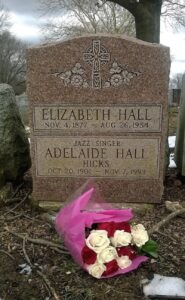 The Final Footprint – Honouring her wish, her funeral took place in New York at the Cathedral of the Incarnation (Garden City, New York) and she was laid to rest beside her mother at the Cemetery of the Evergreens in Brooklyn.
The Final Footprint – Honouring her wish, her funeral took place in New York at the Cathedral of the Incarnation (Garden City, New York) and she was laid to rest beside her mother at the Cemetery of the Evergreens in Brooklyn.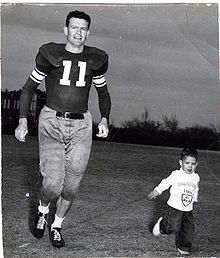 On this day in 2012, United States Army Air Corp veteran, football player at the University of Oklahoma, head coach of the Texas Longhorns (1957-1976), 3x National Champion, 11x Southwest Conference champion, Darrell Royal died due to complications of Alzheimer’s disease in Austin at the age of 88. Born Darrell K Royal on 6 July 1924 in Hollis, Oklahoma. Royal also served as the head coach at Mississippi State University (1954–1955), the University of Washington (1956), compiling a career college football record of 184–60–5. He won more games than any other coach in Texas Longhorns football history. Royal also coached the Edmonton Eskimos of the Canadian Football League for one season in 1953. He never had a losing season as a head coach for his entire career. Royal was inducted into the College Football Hall of Fame as a coach in 1983. Darrell K Royal – Texas Memorial Stadium in Austin, Texas, where the Longhorns play their home games, was renamed in his honor in 1996.
On this day in 2012, United States Army Air Corp veteran, football player at the University of Oklahoma, head coach of the Texas Longhorns (1957-1976), 3x National Champion, 11x Southwest Conference champion, Darrell Royal died due to complications of Alzheimer’s disease in Austin at the age of 88. Born Darrell K Royal on 6 July 1924 in Hollis, Oklahoma. Royal also served as the head coach at Mississippi State University (1954–1955), the University of Washington (1956), compiling a career college football record of 184–60–5. He won more games than any other coach in Texas Longhorns football history. Royal also coached the Edmonton Eskimos of the Canadian Football League for one season in 1953. He never had a losing season as a head coach for his entire career. Royal was inducted into the College Football Hall of Fame as a coach in 1983. Darrell K Royal – Texas Memorial Stadium in Austin, Texas, where the Longhorns play their home games, was renamed in his honor in 1996. On this day in 2016, singer, songwriter, musician, poet, novelist, and painter Leonard Cohen died at the age of 82 at his home in Los Angeles. Reportedly, his death was the result of a fall at his home on the night of November 7, and he subsequently died in his sleep. Cancer was a contributing cause. Born Leonard Norman Cohen on September 21, 1934 in Montreal.
On this day in 2016, singer, songwriter, musician, poet, novelist, and painter Leonard Cohen died at the age of 82 at his home in Los Angeles. Reportedly, his death was the result of a fall at his home on the night of November 7, and he subsequently died in his sleep. Cancer was a contributing cause. Born Leonard Norman Cohen on September 21, 1934 in Montreal.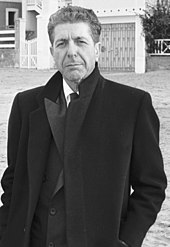

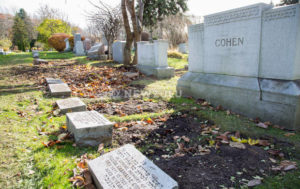 His funeral was held on November 10, 2016, in Montreal, at a cemetery on Mount Royal. As was his wish, Cohen was laid to rest with a Jewish rite, in a simple pine casket, in a family plot in Shaar Hashomayim Cemetery in Montreal . The city of Montreal held a tribute concert to Cohen in December 2016, entitled “God is Alive, Magic Is Afoot” after a prose poem in his novel Beautiful Losers. It featured a number of musical performances and readings of Cohen’s poetry.
His funeral was held on November 10, 2016, in Montreal, at a cemetery on Mount Royal. As was his wish, Cohen was laid to rest with a Jewish rite, in a simple pine casket, in a family plot in Shaar Hashomayim Cemetery in Montreal . The city of Montreal held a tribute concert to Cohen in December 2016, entitled “God is Alive, Magic Is Afoot” after a prose poem in his novel Beautiful Losers. It featured a number of musical performances and readings of Cohen’s poetry.